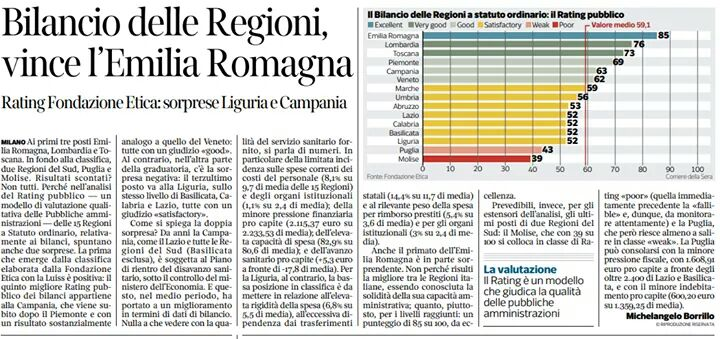
The Corriere della Sera article on the Public Rating of the Regions has sparked a heated debate in many of them.
As expected, the Regions that ranked first praised the result obtained, however often forcing the meaning of the analysis. Likewise, in the Regions that obtained a low score, placing themselves at the bottom of the rankings, the result was used by the political opposition in the Regional Council to launch excessive accusations against the Giunta.
Some clarifications are in order:
The results published by Corriere della Sera concern only one macro-area out of the six that make up the Public Rating elaborated by the Ethics Foundation: financial statement data.
Therefore, Emilia Romagna, which is a benchmark for the budget, may not be so in the other macro-areas (governance, personnel management, services to citizens, contracts and suppliers, environmental impact).
On the other hand, the Regions, such as Molise, which present less virtuous budget data, could recover in the other five macro-areas.
The Public Rating was designed not for political confrontation, but for constructive discussion: an x-ray of what works and what doesn't in the Regional Administration. Thanks to it, the Regions tell their stakeholders and can identify where and how to improve. It is not a race with winners and losers, but a competition to spend citizens' money better.
Bringing a sort of healthy competition between the Regions, the Public Rating implements the spirit of decree 33/2013, the so-called "transparency", making it convenient for the Regions to be more transparent and efficient: the incentive is both reputational (in the media and among stakeholders) and financial (with greater public and private resources).
The "vespa's nest" raised by the Corriere della Sera article is proof of this.





